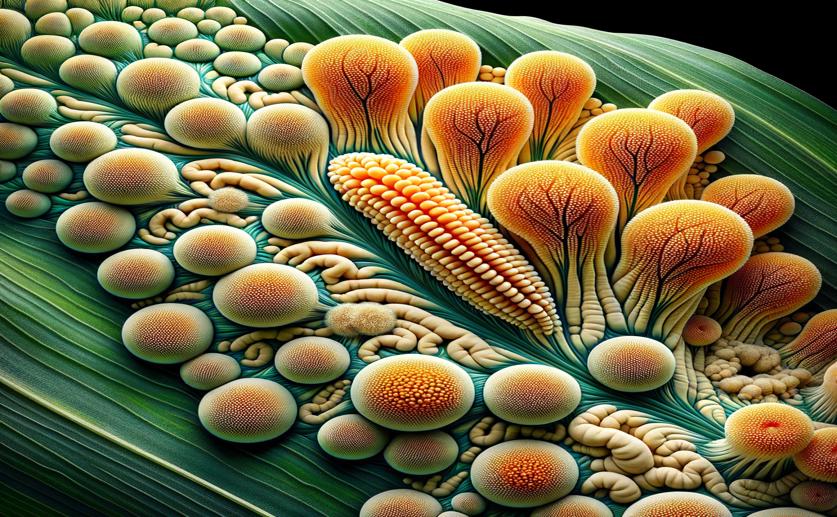
Understanding Fungal Diversity and Behavior in Southern Corn Rust
Greg Howard
4th July, 2024

Image Source: Natural Science News, 2024
Key Findings
- Researchers at Purdue University studied Sphaerellopsis fungi to explore their potential as biological control agents against rust fungi
- They screened 5,621 rust specimens and found 199 infected with Sphaerellopsis, identifying five species, including a new one named Sphaerellopsis melampsorinearum
- Sphaerellopsis species were found to be widespread and not limited to specific rust fungi, with some species showing regional preferences
- The study confirmed that Sphaerellopsis macroconidialis can parasitize rust fungi, suggesting its potential effectiveness as a biological control agent during early rust establishment stages
References
Main Study
1) Characterization of the fungal genus Sphaerellopsis associated with rust fungi: species diversity, host-specificity, biogeography, and in-vitro mycoparasitic events of S. macroconidialis on the southern corn rust, Puccinia polysora
Published 3rd July, 2024
https://doi.org/10.1186/s43008-024-00145-w
Related Studies
2) Deconstructing the evolutionary complexity between rust fungi (Pucciniales) and their plant hosts.
3) A higher-rank classification for rust fungi, with notes on genera.



 16th June, 2024 | Jenn Hoskins
16th June, 2024 | Jenn Hoskins